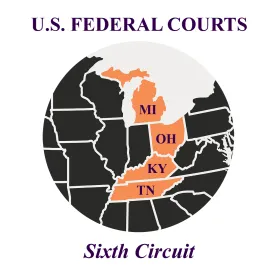On March 8, 2022, the Ohio court issued an opinion in the Hardwick v. 3M case in which it certified a PFAS class action lawsuit that would include over seven million people. In addition, the court left open the possibility that citizens from additional states outside of Ohio could be added to the class, which could potentially add millions more plaintiffs to the lawsuit. The decision was quickly appealed by the defendants and various third parties not involved in the litigation are filing briefs with the Sixth Circuit court asking the court to consider overturning the lower court’s decision.
The significance of the class certification ruling extends well beyond just the PFAS manufacturers and suppliers that are directly named in the lawsuit, though. Our prediction is that, if the class action lawsuit proceeds, it will open the door to similar cases being filed in other states and downstream companies eventually being added into the lawsuits. The financial impacts of this future development would be enormous to companies that did not manufacture PFAS. Companies, lenders, and investors alike must pay close attention to this case and understand the future potential risks that it poses to businesses.
The PFAS Class Action Lawsuit – Hardwick v. 3M
Filed in 2018, the Hardwick case was noteworthy at the time due to the proposed scope of plaintiffs that plaintiffs’ counsel sought to include in the case – any U.S. citizen with detectable levels of PFAS in their blood, which is estimated to be over 95% of the U.S. population by various sources. The case was also significant because the lawsuit did not seek monetary damages. Instead, the relief sought from the court was the establishment of a medical monitoring program for affected citizens and the establishment of an independent science panel to study the effects of numerous PFAS on human health.
To anyone who is familiar with the history of PFAS litigation, the latter remedy sought will sound familiar, as Attorney Rob Bilott famously secured the now renowned “C8 Science Panel” in his PFAS litigation in West Virginia nearly two decades ago. The results of that science panel, which studied the effects of PFOA on human health, led to the landmark findings of probable links between PFOA (also known as C8) and adverse impacts on human health. It was the C8 Science Panel findings that significantly influenced litigation activity, regulatory and legislative activity with respect to PFAS, and media attention on PFAS issues.
March 2022 Court Ruling
The Ohio court ruled that the class of plaintiffs that will be allowed to proceed with the lawsuit is “[citizens of Ohio] who have 0.05 parts per trillion (ppt) of PFOA (C-8) and at least 0.05 ppt of any other PFAS in their blood serum.” The Court limited the class to citizens of Ohio instead of citizens in the United States due to the fact that numerous states do not yet recognize medical monitoring as a legal cause of action, and some states do not permit lawsuits to proceed for an increased risk of disease without any proof of actual harm.
However, the same reasoning that limited the proposed class to only citizens of Ohio may also permit for the expansion of the class – something which the Ohio court invited briefing on. In short, the court recognized that, similar to Ohio, there are other states that do allow for medical monitoring claims under state laws, and those states’ citizens may be permitted to join the Ohio class action lawsuit.
The defendants in the case quickly filed for an appeal to the Sixth Circuit last week, seeking interlocutory review by the court. They argue, among other things, that the class cope is too broad and the costs to implement the remedies sought would be in the billions of dollars, especially given that the lawsuit requested testing pertaining to any PFAS.
Impact On Downstream Businesses
The Ohio state court ruling is incredibly significant not only to the companies directly involved in the litigation, but also to downstream commerce entities. While the manufacturers involved in the current litigation are the immediate targets, it is not outside the realm of possibility to image companies who utilized PFAS, emitted them into the environment, and allegedly contributed to PFAS in the blood of citizens of Ohio (and other states that might be added to the class) being brought into the lawsuit, or pursued in future lawsuits similar to Hardwick. The case will continue to be closely watched by anyone involved in the PFAS litigation, most immediately to see whether the class of plaintiffs is limited in any way or potentially broadened to include other states.




 />i
/>i

